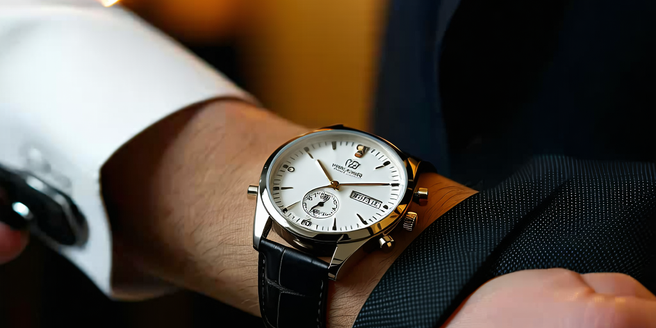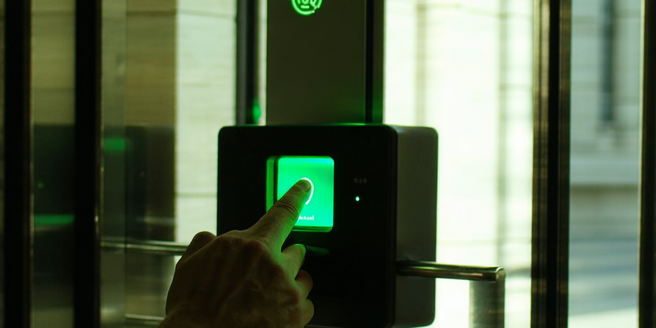
Tech Solutions For Urban Planning
GIS tools, smart city technologies, AI, IoT, and public engagement platforms are transforming urban planning and city management. GIS provides spatial data analysis for sustainable development, while smart technologies enhance urban mobility by optimizing traffic flow and reducing congestion. AI offers data-driven insights for efficient and responsive urban development. IoT connects devices for improved infrastructure management. Sustainable urban planning leverages technology for eco-friendly cities, utilizing renewable energy and green building solutions. Public engagement platforms enable better interaction between citizens and planners, aligning development with community needs. These innovative tools are essential for creating livable, efficient, and resilient cities in the face of rapid urbanization and climate change.

Mouse And Keyboard Combos
Using a mouse and keyboard combo enhances productivity and ergonomic comfort due to smooth navigation and quick typing. Combos often come with programmable keys and shortcuts, streamlining workflows and improving gaming experiences. They minimize desk clutter and eliminate tangled cables, offering mobility and adaptability. Choosing the right combo involves considering usage needs, such as gaming or professional work, and preferences like connectivity or keyboard type. Top brands like Logitech, Razer, Microsoft, and Corsair cater to diverse preferences. Proper setup and troubleshooting ensure optimal performance, while customization enhances efficiency for an ideal computing experience.

Ultra-fast Charging Devices
Ultra-fast charging technology is transforming device powering by drastically reducing charging times through advanced power delivery systems. This technology increases power throughput using higher voltage levels and multiple power channels, making it ideal for electric vehicles and high-capacity gadgets. Ultra-fast chargers also maintain battery health using smart charging algorithms. As research progresses, even faster solutions are expected, minimizing reliance on traditional power sources. Key benefits of ultra-fast chargers include significant time savings, energy efficiency, and versatility across different devices. Leading brands like Tesla, Qualcomm, and Samsung are pioneering innovations in this space, with rapid-charging systems offering some of the fastest solutions available. Ultra-fast charging devices work by safely increasing electrical current using robust power management and smart technology to optimize speed without damaging batteries. The future holds further advancements, such as increased charging speeds, wireless charging, and AI integration for enhanced efficiency and environmental sustainability.

Wearable Tech For Fitness
Discover the evolution and benefits of wearable fitness technology. From simple pedometers to sophisticated devices monitoring heart rates, sleep, and stress, wearable tech has transformed personal health management. With AI and advanced sensors, fitness wearables provide personalized recommendations and insights into health metrics like calorie consumption and sleep quality, motivating users to set and achieve goals. Top brands like Fitbit, Garmin, and Apple Watch offer unique features for various fitness needs. Future trends promise advanced biometric sensors, AI-driven personalization, and augmented reality experiences. Choosing the right wearable involves understanding your fitness goals and lifestyle, ensuring it becomes a valuable tool in your fitness journey.

Biodegradable Electronics Development
Biodegradable technology is revolutionizing industries by introducing products that naturally decompose, particularly addressing the environmental challenges of e-waste in electronics. These innovations use materials, like polylactic acid and cellulose, designed to break down without harming the ecosystem. Advances include dissolvable sensors and degradable medical implants, aligning with the trend of integrating biodegradable principles into tech design. The benefits include reduced e-waste and alignment with sustainable development goals. However, challenges such as optimizing durability and electrical conductivity remain. Ongoing research aims to improve materials' functionality and address economic viability. The future of biodegradable electronics is promising, with innovations like biodegradable batteries and integrated circuits expected. Collaborative industry and research efforts are essential to spur further development and adoption of these eco-friendly technologies.

Assessment Of Smartphone Vapor Cooling Technologies
Modern smartphones require effective cooling solutions to handle the heat generated by their powerful processors and high-resolution displays. As these devices become essential for various high-performance tasks, traditional passive heat dissipation methods are insufficient. Advanced cooling technologies, such as vapor cooling systems, have become necessary to balance performance and thermal efficiency. Vapor cooling technology utilizes phase change principles to efficiently manage heat, enhancing smartphone performance and lifespan. Comparing vapor chambers and heat pipes, each offers distinct advantages in heat management, influencing the choice based on a smartphone's design goals. Evaluating smartphone cooling performance involves metrics like thermal conductivity, resistance, and system response time, guiding manufacturers in optimizing cooling solutions. The integration of cooling systems impacts smartphone design by influencing weight, component layout, and overall device architecture, striving to maintain sleekness without sacrificing cooling efficiency.

Challenges In Wearable Tech Manufacturing
Advanced materials play a vital role in wearable technology, offering unique opportunities and challenges. These materials need to be lightweight, durable, flexible, and environmentally friendly, with innovations like conductive fabrics leading the way. Durability and longevity are critical, addressing wear and tear while optimizing resilience and user maintenance. Miniaturization is key, enabling powerful yet compact devices through advancements in micro-engineering and efficient thermal management. Balancing functionality with aesthetics is crucial for consumer acceptance, requiring collaboration between engineers and designers. Additionally, efficient supply chain management is essential due to global manufacturing complexities, emphasizing ethical sourcing and adaptability.

Smart Wearables
Wearable technology has evolved significantly from basic pedometers to advanced smartwatches, fitness bands, and health monitoring gadgets. Modern smart wearables integrate advanced sensors, connectivity options, and artificial intelligence to enhance functionality and personalization. They provide valuable insights into health metrics, aiding in healthier lifestyle choices and efficient time management. Features like heart rate monitoring, sleep analysis, GPS tracking, and smartphone notifications make them indispensable tools for health enthusiasts. However, challenges such as battery life, sensor accuracy, and data privacy persist. Future trends include standalone functionality, improved design, and a focus on secure data handling. As healthcare digitizes, wearables are set to play a crucial role in remote patient monitoring and personal health management.

Smart Speakers With Virtual Assistants
Smart speakers have become integral to our daily lives, thanks to advancements in voice recognition and artificial intelligence. These devices use far-field microphones and natural language processing to understand user commands, aiding in tasks from playing music to controlling smart home devices. Modern virtual assistants enhance convenience with features like reminders, weather updates, and personalized recommendations. They are integrated with smart home systems for control of lighting and security. Smart speakers simplify tasks, enhancing convenience, and providing accessibility benefits. The market features brands like Amazon Echo, Google Nest, and Apple HomePod, each with unique strengths. Choosing the right smart speaker involves considering sound quality, device compatibility, and AI capabilities. Future trends indicate continuous advancements in AI, pushing the boundaries of personal automation.

Timex Smart Style Hybrid
The Timex Smart Style Hybrid Watch elegantly combines classic design with modern trends, making it versatile for any occasion. With a traditional analog appearance integrated with subtle digital features, this watch transitions effortlessly from casual to formal settings. Offering options like stainless steel or leather straps, it provides elegance and durability. Packed with smart technology, it connects to smartphones for notifications, fitness tracking, and more, maintaining a balance between style and function. Notable for its long battery life, it lasts months on a single charge, contrasting with many fully digital smartwatches. Compatible with both iOS and Android, it ensures seamless connectivity. Users appreciate its mix of classic aesthetics and contemporary smart features, making it a highly functional yet stylish choice.

Smart Home Automation Trends
Emerging technologies are transforming smart home automation by integrating Artificial Intelligence (AI) and Machine Learning to create personalized home experiences. Advancements in sensor technology and the adoption of 5G enhance connectivity and energy efficiency, while edge computing improves data processing. Voice control is reshaping home interaction through smart speakers and voice-activated assistants, offering hands-free convenience and accessibility. Sustainable solutions in smart homes focus on energy optimization and waste reduction with smart thermostats, lighting systems, and renewable energy integration. Security enhancements provide peace of mind with real-time monitoring, motion detection, and AI-enabled smart cameras and locks. AI plays a crucial role by learning user behaviors to automate tasks, optimize energy use, and seamlessly integrate with IoT devices. These advancements are setting new standards for operational efficiency, convenience, and eco-friendly living, promoting a safer and more intelligent home environment.

Biometric Security Measures
Biometric security technologies are transforming data protection and security access through unique biological traits like fingerprints, facial patterns, and iris structures. Offering enhanced security due to their difficulty to replicate, these systems become more accurate and affordable as technology advances. Despite their advantages, privacy and data protection concerns must be considered, with compliance to regulations being crucial. Fingerprint scanning and facial recognition are popular due to ease of use and non-intrusiveness, respectively, although each has challenges such as sensor maintenance and data privacy. Iris scanning offers high accuracy and user convenience but is costly and sensitive to environmental factors. Emerging behavioral biometrics focus on identifying users through their unique behaviors, offering continuous authentication, though raising privacy concerns. Despite their effectiveness, biometric security systems face challenges that need addressing as the digital age progresses.